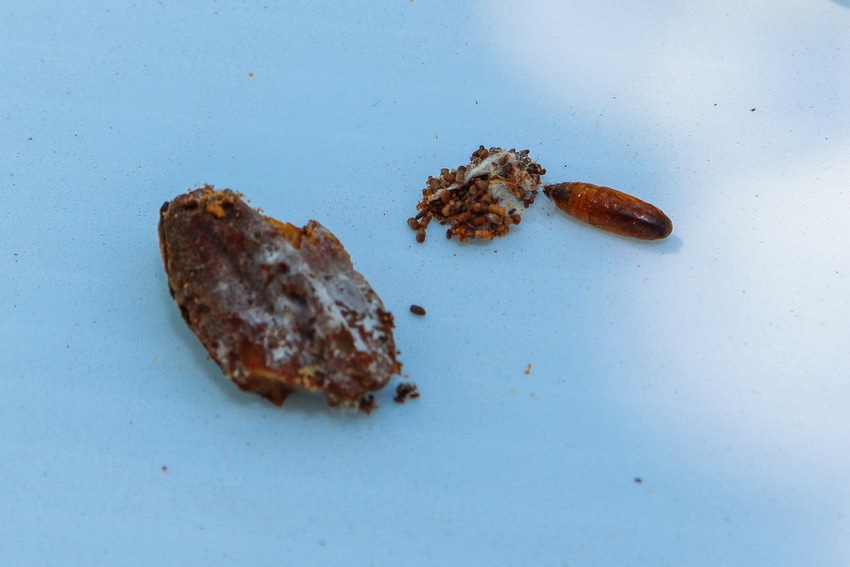
California pistachio growers and processors are on board with an ambitious plan to transition the USDA pink bollworm (PBW) sterile moth rearing facility at Phoenix, Ariz. to mass produce infertile Navel orangeworm (NOW) moths to reduce crop damage in the Golden State.
The project aims to raise millions of sterile NOW moths for release during the pistachio growing season to help suppress large native NOW populations which threaten crop quality in pistachio, almond, and walnut crops.
Bob Klein, technical director of the California Pistachio Research Board (CPRB), says growers recognize the importance of knocking back NOW populations to prevent high rates of crop damage.
According to Klein, the Board recently committed $2.5 million to this project, considered essential for improving pistachio crop quality. He says the program would spend $3.1 million in 2018 to raise one million NOW moths per day from February through early November for aerial release.
The remainder of the project funding, he says, would come from USDA’s Animal and Plant Health Inspection Service, or APHIS.
Sterile insect technology is nothing new. It’s been a successful component toward the eradication of the pink bollworm in cotton and the screwworm in the U.S. It involves mass production of the targeted insect, sterilizing the adult moths, and then releasing the steriles by air over farm fields at the best times for control.
Pistachio nuts are more vulnerable to NOW infestation than other tree nuts since it’s harder to detect damage in the in-shell product. Orchard sanitation, a standard practice to suppress NOW, is difficult due to the physical properties of the nuts and berms on orchard floors.
This year, Klein says limited releases of NOW sterile moths are planned to evaluate the survival and field activity of the steriles. He says technicians at the rearing facility have proven the sterile moths can be produced.
The 2018 pilot plan will include the release of several million moths in isolated orchards to determine their effectiveness in suppressing native NOW populations. Work at the rearing facility will also focus on increasing the number of moths and testing aerial releases.
Roger Isom, executive director, Western Agricultural Processors Association, says technicians at the rearing facility, which was scheduled to be closed due to the near eradication of PBW, have demonstrated success in rearing NOW moths.
This year, NOW sterile moth releases will be evaluated to determine the moth’s ability to survive outside the laboratory. Continued NOW sterile insect rearing there will help retain experienced personnel in mass pest production and allow the use of irradiation material, says Isom.
The Phoenix facility, owned by California Cotton Growers and operated by USDA, was set to close this year following the wrap-up of pink bollworm sterile moth eradication efforts.
Clyde Sharp, a long-time cotton leader in Arizona who has worked closely with the Phoenix lab and bollworm eradication, says the lab is a good facility to help fight pests in other crops, including NOW. He says the facility can produce three million sterile NOW moths per day.
California pistachio and cotton grower-leader Ted Sheely has worked with Sharp to transition the Arizona facility to produce sterile NOWs. Sheely says sterile insect technology is another tool to combat Navel orangeworm, a pest which causes millions of dollars in crop losses annually.
As a pistachio grower, Sheely spends about $450 per acre annually for NOW control and says pesticides are becoming less effective. He says the protocol to ship and aerial release NOW moths will be similar to the program that released sterile pink bollworms.
About the Author(s)
You May Also Like




